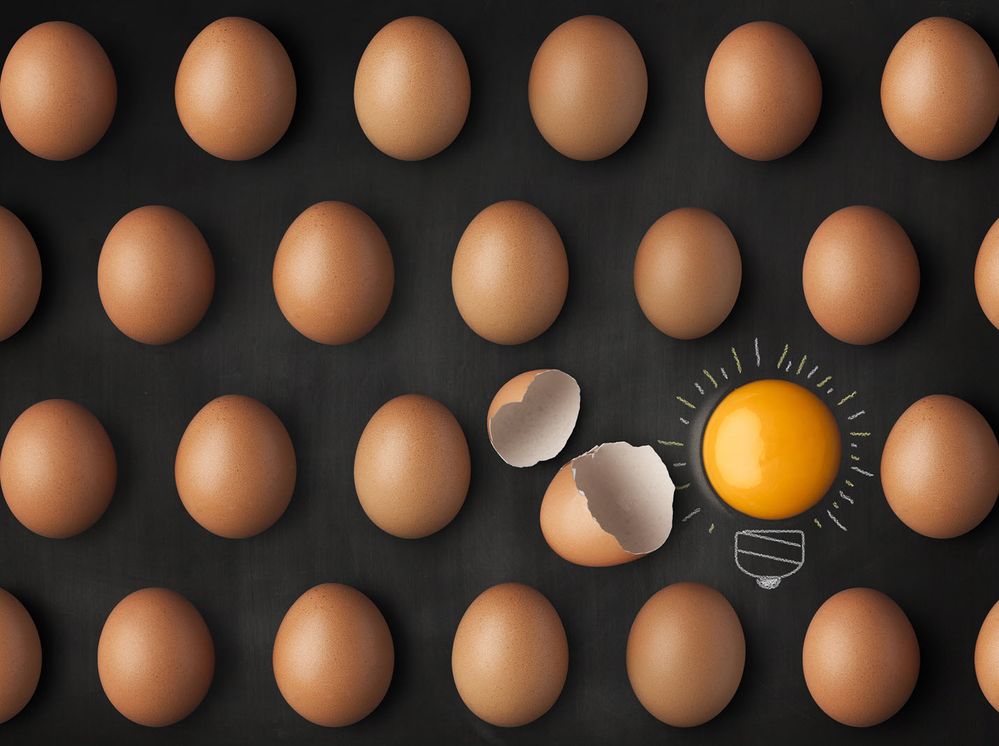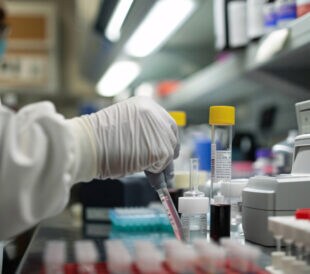Do you recall the first thing you learned how to cook? For me, it was scrambled eggs. I clearly remember the steps I was taught: crack eggs into a bowl and mix, then butter the pan, finish by adding salt to the cooked eggs. For years I made my eggs this way.
 Fast forward a couple of decades and I was reading a cookbook. Imagine how confused I was when the author suggested salting the eggs 10 minutes prior to cooking, and then adding the butter to the eggs before they go into the pan. “What is this madness,” I thought. I have always made eggs the same way, how could this method provide a better outcome?
Fast forward a couple of decades and I was reading a cookbook. Imagine how confused I was when the author suggested salting the eggs 10 minutes prior to cooking, and then adding the butter to the eggs before they go into the pan. “What is this madness,” I thought. I have always made eggs the same way, how could this method provide a better outcome?
Long story short, my original way was not all it was cracked up to be – it worked, but it was not great, and before this cookbook, I never understood the science behind the decisions I was making; for me, success was achieving a result by carrying on the tradition of what had always been.
How much of this holds true when it comes to a lab’s method development? We often follow the advice of those around us for advanced method development questions. Could this inadvertently cause us to carry forward traditions that produce less than desirable results? How much of an impact does following tradition make when developing a protein charge variant assay?
Spice up your method development
Salt-based ion exchange separations dominate the published literature for protein charge variant analysis. In these methods, phosphate is frequently used as the buffer for pH control. Published hundreds of times, we may not think this would be an issue for cation exchange method development. But when we start to look at this objectively, we realize that phosphate is anionic, carrying a negative charge. Our cation exchange resin, whether WCX or SCX, also carries a negative charge. Instead of buffering the stationary phase, the phosphate is being repelled. As another consideration, phosphate has 3 pKas, which could pose risk for inconsistent pH control and poor chromatography. Why should we carry this tradition on? Instead, let’s start a new tradition with our method development by using neutral Good’s buffers to ensure method control and reproducibility.
Maintain your buffer concentration
Another common trait in charge variant methods is gradients having a low buffer concentration, such as 10 mM. Low buffer concentrations do not yield methods with a constant pH. If the on-column pH fluctuates in salt gradient separations, the user may experience inconsistent results lot-to-lot. Ideally, methods should be developed with a minimum 20-50 mM buffer for proper pH control.
Don’t forget the salt!
Salt concentration is another important consideration on ion-exchange columns. A colleague may recommend flushing your column with 100% water before storage, but this can damage the column. We always recommend a minimum of 20 mM salt be maintained on the column for peak performance.
Looking for more resources to sort facts from myth in charge variant method development or the whys behind the above suggestions? We have a short animation here to start you with the basics, and a one-hour on-demand webinar here with great detail on how to develop a robust charge variant method that won’t leave you with a “bad taste.” Curious about our other capabilities that allow you to monitor protein critical quality attributes? Please find a brief overview here.

Episode 3: Understanding How Charged Aerosol Detection (CAD) Works
Welcome back to our series on Charged Aerosol Detection (CAD...
Read More
Deciphering Selenium Nutrition Using Speciation Analysis with ICP-MS
Many elements, such as chromium, zinc or selenium are consid...
Read More
Beyond IP 585: A Faster, More Precise Approach to Aviation Fuel FAME Analysis
As the aviation industry continues to evolve toward greener ...
Read More
Automated LC-MS Sample Cleanup Using Turbulent Flow Chromatography
Too much interfering matrix? Discover how to streamline your...
Read More